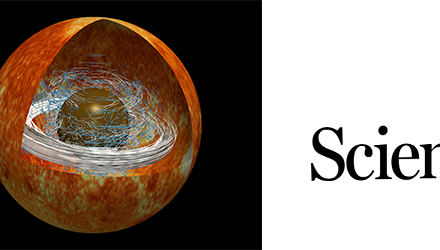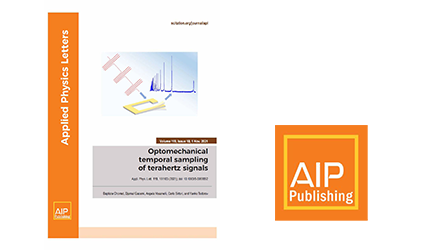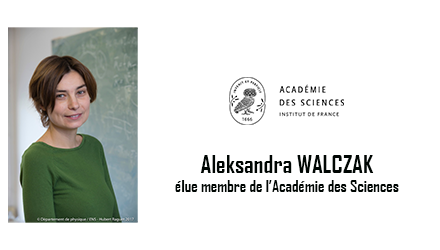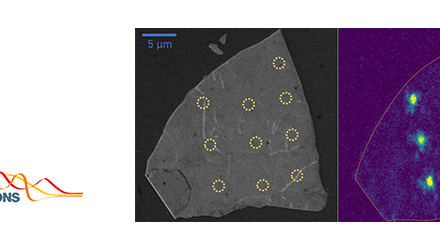Researchers from the LPENS Micromégas team (ENS, CNRS, Sorbonne University, University of Paris) have studied the behavior of a gold nanowire when it is subjected to dynamic excitation at one of its ends. These nanowires —or gold junctions, are composed of a handful of atoms, and their cross-section has a diameter of a number of atoms perfectly determined thanks to the electrical properties of the wire. How to excite a sub-nanometric junction and measure its deformations in real time? This experimental challenge was achieved thanks to a very special atomic force microscope: the researchers added a tuning fork at its end, allowing both to excite the wire and to measure its mechanical response! A tuning fork having an excellent quality factor, one can associate the variations of its resonance frequency measured with great precision with the mechanical response of the junction.
In their study published in Nature[1], the researchers characterized the behavior of a junction when it is subjected to stress. As with conventional solids, nanowires stretche elastically with low excitation (elongation <5%), then enter a plastic regime where the excitation is more intense (elongation between 5 and 10%). But surprisingly, by increasing this excitation, the nanowire starts to respond as a viscous fluid of constant viscosity, a result in contradiction with the knwoledge we have of the dynamics of crystalline solids without defects! This behavior is surprisingly similar to that of foams and emulsions, although they are separated by 8 orders of magnitude.
This first study of the rheology of a gold atom junction, made possible by a detector of very high precision and stability, shows a counter-intuitive phenomenon of “fluidification” of solids at the atomic scale. This discovery leads to a rethinking of the classical modeling of a solid under stress, and allows a better understanding of the friction phenomenon on a macroscopic scale.
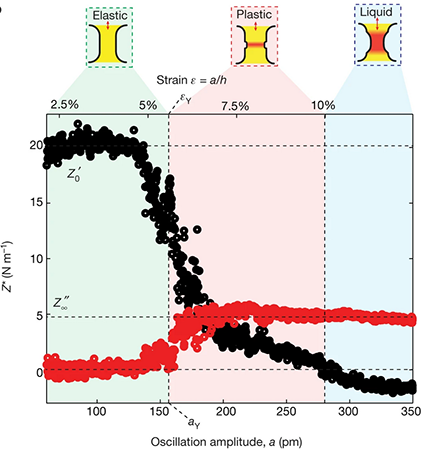
Figure : Mechanical response of nanowires with identical cross-section, for a variable excitation amplitude. In black the real part of the response function and in red the dissipative part. The three elastic, plastic and viscous regimes are colored respectively in green, red and blue. The plateau of the dissipative response is characteristic of a viscous regime.
More :
[1] Comtet et al., Atomic rheology of gold nanojunctions, Nature 569, 393–397 (2019).
Author affiliation :
Laboratoire de Physique de L’Ecole normale supérieure (LPENS, ENS Paris/CNRS/Sorbonne Université/Université de Paris)
Corresponding author:
Communication contact:











